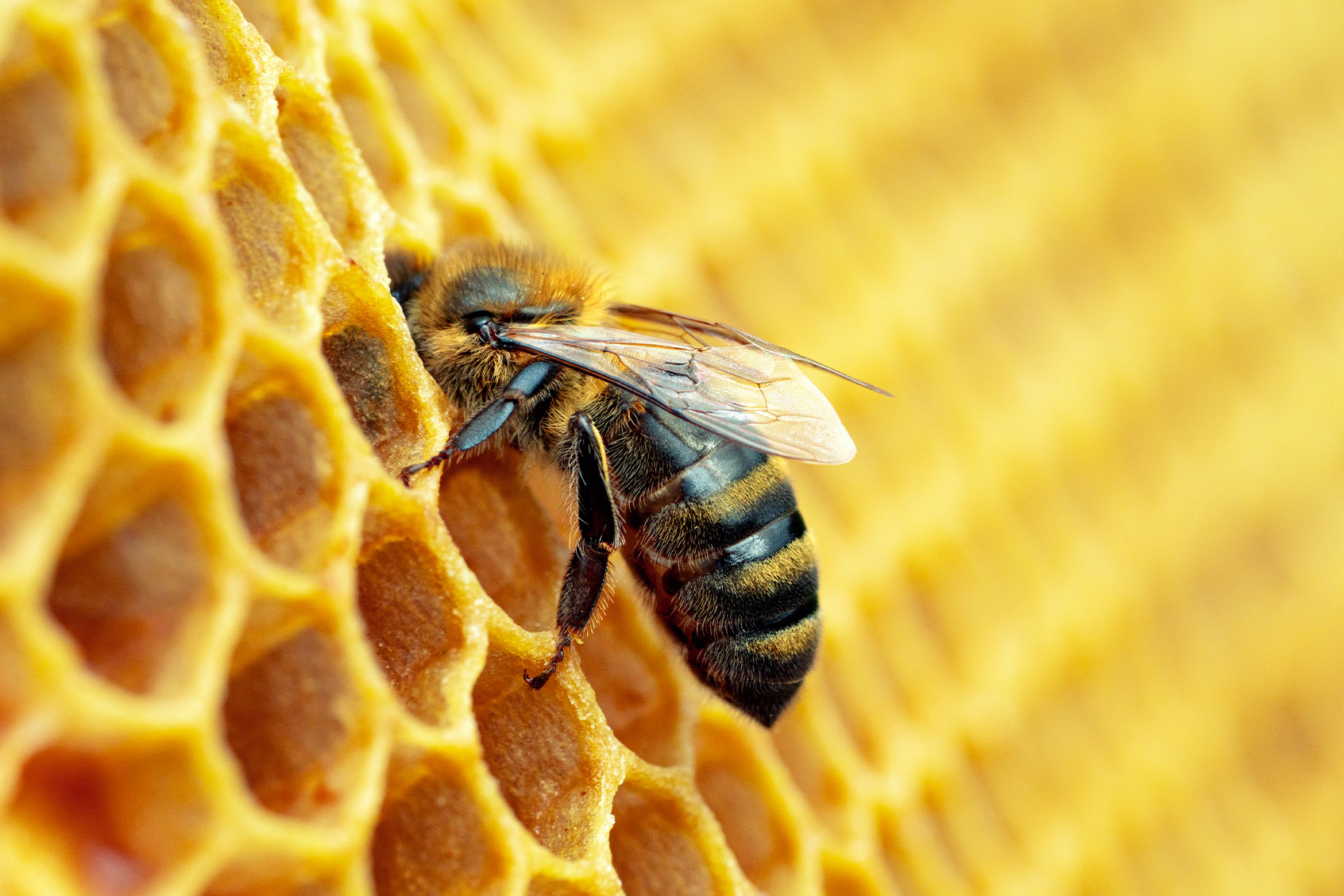Hexagons are mutually associated with bees and wasps, as both insect species build their nests using this humble six-sided shape. Anyone who stumbles upon a bee or wasp nest in nature will be greeted by rows and rows of dozens of tiny symmetrical hexagons. But these bug aesthetics are completely functional and used by the insects to store their food and raise their young. Yet for some species, the hexagon comes with a nasty catch: It isn’t one-size-fits-all. Consequently hexagons of various different sizes need to be built, and yet still fit neatly within the overall nest.
“To find that all of them fall on the same continuum when merging different sizes of hexagons together is really cool.”
How do wasps and insects solve this architectural problem? Thanks to an international team of scientists, humanity now knows the answer — and it will perhaps change the way we look at insects, and evolution, forever.
In a study published by the scientific journal PLOS Biology, scientists revealed the results of their research into five honeybee and five wasp species’ nests, analyzing the data on 22,745 individual cells. These come in two “dimorphic” sizes, “small worker cells and large reproductive cells, which forces the builders to join differently sized hexagons,” the authors explain. “Together, this inherent tiling problem creates a unique opportunity to investigate how similar architectural challenges are solved across independent evolutionary origins.”
Indeed, despite the similarities between wasps and bees, both being in the order hymenoptera (along with ants), they have been evolving independently for an estimated 179 million years — yet they’ve both arrived at the same conclusion to the same problem when it comes to building their homes.
Simply put, if the size difference between two hexagonal cells is small, the insects build medium-sized hexagonal cells in between; if the difference between two hexagonal cells is large, they use five-sided cells and seven-sided cells at the join. This is consistent with fundamental geometric rules, showing a level of intelligence humans consistently do not expect from insects. Incredibly, the smart little bugs figured out these principles regardless of the substances they were using to compose their nests.
According to corresponding author Dr. Michael Smith, who teaches at Auburn University’s Department of Biological Sciences, bees and wasps have developed remarkably similar methods for solving hexagon-based architectural problems. This discovery is significant because bees and wasps do not share any ancestors that built hexagons.
We need your help to stay independent
“I think the most interesting result is that we’re finding that collective systems come up with the same solutions for the same problems, despite being separated by millions of years of evolution,” Smith told Salon by email. Because they solve their hexagonal problems in the same way, “this is showing us that collective systems can arise at the same solutions to the same problems, even when it’s thousands of individuals that have to coordinate their behavior to come to those solutions.”
The most immediate implication of this study is that it could help humans with their own architectural problems. As Smith pointed out, “hexagons are in all sorts of building materials, and the bees and wasps are showing us a method that can be used to merged differently-sized hexagons together. To my knowledge, I don’t think we have a good way of doing that, and here we’ve got an excellent method that is scalable (i.e., depending on the difference in size between the hexagons, it’ll show you how and where to put those non-hexagonal shapes).”
Want more health and science stories in your inbox? Subscribe to Salon’s weekly newsletter The Vulgar Scientist.
“Collective systems can arise at the same solutions to the same problems, even when it’s thousands of individuals that have to coordinate their behavior to come to those solutions.”
Smith told Salon it’s likely useful for people to know that the hexagonal arrays built by bees and wasps are very different.
“The materials are different (wax in bees vs paper in wasps), the configurations are different (double-sided in bees vs single-sided in wasps), and the evolutionary origins are different,” Smith said. “To find that all of them fall on the same continuum when merging different sizes of hexagons together is really cool, because it shows that even when you have completely independent origins of a collective behavior, you can still come to the same solutions.”
Salon then asked Smith if he believed his findings reveal a sense of individuality among the insects that build these nests. After all, while the species may be operating based on instinct and collective intelligence, there must still be individuals within those collectives to execute orders and implement architectural plans.
“They are building architectural configurations that seem optimized. This is certainly the product of evolutionary forces over time.”
“Whether they’re driven by behavioral rules or cognitive process, it’s still impressive to see these repeatable and predictable architectural fixes, especially because it is a collective behavior (i.e. there’s no central controller driving the behavior of all the workers),” Smith explained. Therein lies the remaining mystery: To what extent are these bees and wasps actually “aware” of what they’re doing?
“Both bees and wasps build (and fix) their hexagonal cells with a collective — it’s hundreds to thousands of individuals that are participating in that building process,” Smith wrote to Salon. “While each individual might not have an ‘awareness’ of what they’re doing, at the colony-level, they are building architectural configurations that seem optimized. This is certainly the product of evolutionary forces over time. Even if the insects are following some set of instructions, we can still marvel that those instructions have gotten them to the same architectural fixes.”
Read more
about insects


